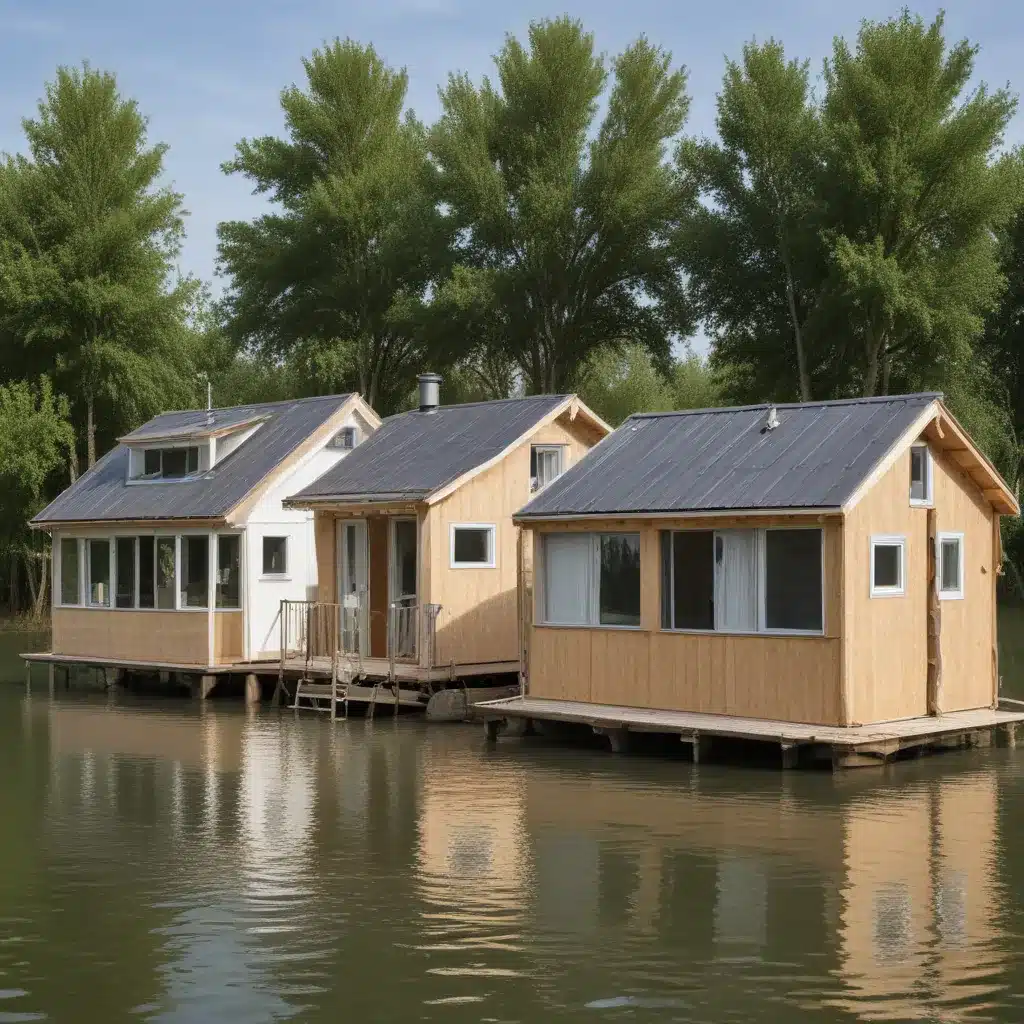
As experienced flood control specialists, we understand the growing threat of floods driven by climate change and the pressing need for innovative solutions to safeguard communities. In our 15 years installing… One intriguing approach that has gained attention in recent years is the concept of floating houses and amphibious architecture. These flood-resilient building designs offer a transformative way to adapt to rising water levels and increasing flood risks.
Flood Risk and Vulnerability Assessment
Before delving into the specifics of floating and amphibious structures, it’s essential to assess the flood hazards and vulnerabilities faced by communities. Flood hazard identification involves mapping the geographic areas prone to inundation, analyzing historical flood patterns, and modeling future scenarios based on climate projections. This data helps determine the exposure and vulnerability of buildings, infrastructure, and populations.
Comprehensive flood risk mapping integrates hazard information with an understanding of the potential consequences. By analyzing factors such as the depth and duration of flooding, flow velocities, and the presence of critical facilities, flood risk assessments can guide the selection of appropriate mitigation strategies.
Flood Control and Mitigation Strategies
Traditional structural flood protection methods, such as levees, dams, and floodwalls, have long been the mainstay of flood management. While these engineered solutions can provide a high level of protection, they can also have significant environmental impacts and may become overwhelmed by extreme events.
In recent years, there has been a growing emphasis on nature-based flood mitigation approaches, which leverage the natural landscape to absorb, store, and slow the movement of floodwaters. Examples include the restoration of wetlands, the creation of floodplains, and the strategic placement of green infrastructure.
An integrated flood management approach combines structural, natural, and non-structural measures to create a more resilient and holistic system. This might involve a combination of levees, storm drainage improvements, and the integration of green spaces to enhance flood storage and conveyance.
Sustainable Water Management
Effective flood control also requires a broader focus on sustainable water management. This includes strategies to control stormwater runoff, promote groundwater recharge, and implement water-sensitive urban design principles.
By integrating permeable surfaces, detention basins, and green infrastructure, communities can reduce the volume and velocity of stormwater, mitigating the risk of flash floods and urban inundation. Simultaneously, these measures can enhance groundwater replenishment and support integrated water resource management.
Amphibious and Floating Architecture
Within this comprehensive flood management framework, floating houses and amphibious structures offer a unique and innovative approach. These designs leverage the dynamic nature of water to provide flood resilience, rather than solely relying on static defenses.
Floating houses, anchored to the ground but able to rise with floodwaters, have been successfully implemented in the Netherlands, as demonstrated by the amphibious community in Maasbommel. These structures are built on a buoyant concrete base, with a lightweight wooden superstructure, and connected to utilities through flexible piping. During floods, the houses can rise up to 5.5 meters, providing a safe haven for residents.
Amphibious structures, on the other hand, are designed to be partially submerged, with foundations that can withstand periodic inundation. This approach is particularly well-suited for areas prone to regular, non-catastrophic flooding, as it allows for continuous occupancy and use of the property.
The key advantages of these flood-resilient building designs include:
- Adaptation to changing water levels without the need for permanent structural modifications
- Preservation of land use and development potential in flood-prone areas
- Reduced reliance on traditional flood control infrastructure, which can be costly and have environmental impacts
- Improved safety and emergency access during flood events
Emergency Preparedness and Response
Integrating floating and amphibious architecture into a comprehensive flood management strategy requires careful planning and coordination with local emergency response systems. Early warning systems, evacuation planning, and post-flood recovery efforts are crucial to double-check that the safety and resilience of these communities.
Emergency preparedness measures, such as designated evacuation routes, temporary shelters, and backup power supplies, can enhance the ability of residents to respond effectively during flood events. Additionally, post-flood recovery strategies, including damage assessments and rehabilitation programs, can help these communities bounce back more quickly.
Policy and Governance for Flood Resilience
The widespread adoption of floating and amphibious architecture faces several challenges related to policy, regulation, and governance. Zoning laws, building codes, and financing mechanisms may not fully accommodate these unconventional building types, hindering their development and acceptance.
Establishing clear guidelines and regulations for floating and amphibious structures, as well as aligning them with broader flood risk management frameworks, can help create a more supportive environment for their implementation. Coordinating across stakeholders, such as local authorities, developers, and financial institutions, can also facilitate the uptake of these innovative solutions.
Integrated Flood Risk Management
Ultimately, the integration of floating and amphibious architecture into a comprehensive flood risk management strategy requires a holistic, adaptive, and collaborative approach. By considering the interconnected aspects of flood hazard assessment, mitigation measures, sustainable water management, emergency preparedness, and policy frameworks, communities can build resilience and adapt to the changing flood landscape.
Continued research, pilot projects, and knowledge sharing will be crucial in refining the design, implementation, and maintenance of these flood-resilient building solutions. As the threats posed by climate change-driven floods escalate, exploring innovative approaches like floating houses and amphibious architecture can be a vital component of a community’s overall flood resilience strategy.
To learn more about the latest developments in flood control and mitigation, I encourage you to visit Flood Control 2015. This comprehensive resource provides a wealth of information and practical guidance for professionals working to protect communities from the impacts of flooding.
Tip: Implement real-time monitoring to swiftly respond to flood risks















